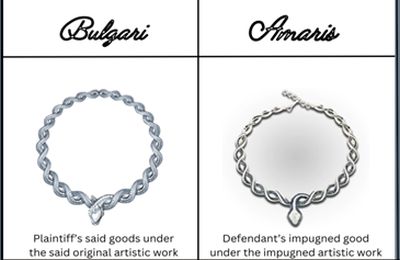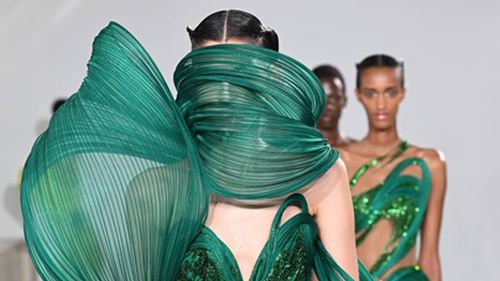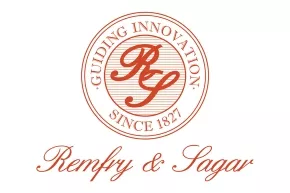- within Intellectual Property topic(s)
- in United States
- with readers working within the Law Firm industries
- within Intellectual Property topic(s)
- with readers working within the Law Firm industries
- within Intellectual Property, Media, Telecoms, IT, Entertainment, Litigation and Mediation & Arbitration topic(s)
- in United States
Custom Indian fashion and jewelry has been the cynosure of the global fashion press this July on account of the mega-budget wedding of Anant Ambani – son of Asia's richest man Mukesh Ambani - which concluded in Mumbai recently. One of the things that stood out was that no matter the number of events or how extensive the guest list, each garment and ornament worn was as unique as it was eye-catching. The various looks showcased will inevitably spawn trends for Indian wedding fashion and the question that arises then for IP practitioners is what recourse designers will have to combat imitators seeking to free ride on the fruits of their labour. Protection in such cases is primarily the preserve of Indian copyright and design laws, but the answer is not always easy as both regimes offer overlapping protection. This article analyses the Indian IP framework and proposes viable models of protection based on recent jurisprudence.
Copyright
Dual statutory protection under the design and copyright statute is not possible in India. If one protects a fashion or jewelry creation under the designs statute, copyright protection is ruled out by virtue of Section 15(1) of the Copyright Act, 1957 – see below. Similarly, Section 2(d) of the Designs Act, 2000 bars design registration for any artistic work as defined in Section 2(c) of the Copyright Act.
That said, if one has not obtained design protection for an article capable of design protection, Section 15(2) of the Copyright Act offers a limited respite – the design enjoys copyright protection until more than 50 copies are made of it by an industrial process.
Section 15 of the Copyright Act, 1957 reads:
1) Copyright shall not subsist under this Act in any design which is registered under the Designs Act, 2000.
2) Copyright in any design, which is capable of being registered under the Designs Act, but which has not been so registered, shall cease as soon as any article to which the design has been applied has been reproduced more than fifty times by an industrial process by the owner of the copyright, or, with his licence, by any other person.
S. 15(2) has been the crux of many legal battles, particularly in the fashion industry, where artistic vision and design innovation must align with commercial manufacture. Conflict is especially apparent when considering handmade goods - Section 15(2) of the Copyright Act, 1957 does not cover "handmade reproduction" of designs, however, it is not always clear how this applies to handcrafted items. Two recent cases offer valuable insights.
Bulgari's SERPENTI necklace
Bulgari, a renowned Italian luxury brand, known for its innovative jewelry, watches, fragrances, accessories, etc. claimed that the defendant's "Shield-It Necklace" was a substantial imitation of its iconic 'Serpenti Necklace'. Alleging copyright and trademark infringement as well as passing off, it filed a suit before the Delhi High Court [ Bulgari S.P.A. vs. Prerna Rajpal Trading as The Amaris Flagship [CS(COMM) 341/2024].

The defendant trading as 'The Amaris Flagship Store' was found to be selling jewelry designs substantially similar to Bulgari's Serpenti necklace - the "Shield-It Necklace" in particular - on the website www.amarisjewels.com. The latter first issued a cease-and-desist notice to the defendant. Amaris acknowledged inspiration, however, denied similarity between the two designs. Still, an undertaking was made stating that all 'SERPENTI' like designs would be removed from the Amaris website. However, the defendant continued to market the infringing products which led to the filing of the instant suit.
The court did not dispute Bulgari's strong trademark rights over the mark 'SERPENTI' and injuncted Amaris' use of the identical mark 'SERPENTI' in respect of identical products.
More relevant to the current discussion was Bulgari's assertion that its 'Serpenti Ocean Treasure Necklace' comprised distinctively placed elements i.e. a unique form, shape, manner of depiction, and arrangement, which results in a unique original expression qualifying as an 'original artistic work' within the meaning of the Copyright Act, 1957. Reliance was placed on the copyright registration obtained for the aforesaid work in Italy and it was argued that India being a signatory to the Berne Convention for the Protection of Literary and Artistic Work meant that copyright protection had spilled over to India. It was further claimed that the vision of the Serpenti Necklace began as a sketch on paper, followed by handcrafting into a three-dimensional product.
The court was of the view that the defendant's 'Shield-it Necklace' bore strong resemblance with Bulgari's 'Serpenti Ocean Treasure Necklace' – in terms of design, structure, color scheme, and ornamentation placement. Also, Bulgari's copyright registration secured in Italy, was sufficient to demonstrate ownership of the said artistic work in India. Further, Bulgari's contention that the bar placed by Section 15(2) of the Act was not applicable, was found to be meritorious on the grounds that (a) the threshold of 50 reproductions had not been crossed; and (b) the necklace was not manufactured through an industrial process.
Thus, Bulgari was successful in obtaining an interim injunction in its favour and the matter will next be heard on September 30, 2024.
Sculpted Boning
In another instance, Gaurav Gupta, an Indian fashion designer who has worked with international celebrities like Beyonce and Cardi B, recently filed a suit before the Delhi High Court alleging that the defendant had infringed his copyright and design by copying the 'sculpted boning' technique which makes Gaurav Gupta's garments unique [M/S Reflect Sculpt Private Ltd. & Anr v. Abdus Salam Khan [CS(COMM) 278/2024].
The copyright claim was rooted in drawings and sketches protected under the copyright statute and finished garments handcrafted as 3-dimensional artistic works basis those sketches and drawings. Further, some of Gaurav Gupta's handcrafted garments (which too were a subject matter of the instant suit), were registered designs under the Designs Act, 2000.
The defendant was found manufacturing, advertising and selling garments which were replicas/ substantial imitations of garments made by Gaurav Gupta and the court was of the view that besides minor difference on use of colours, the garments manufactured and sold by the defendant were identical to the creations of the plaintiff and infringed both copyright and design rights. Given that the products were handcrafted, and the fact that not more than 50 reproductions had been sold, the Court opined that the bar of Sec 15(2) of the Copyright Act was not applicable in this case. Further, copyright in the plaintiff's drawings for its designs also qualified for protection under Section 14(1)(c) read with Section 51 of the Copyright Act, which precludes reproduction or depiction of a two-dimensional work in three-dimensional form.

Example of Designer Gaurav Gupta's sculpted boning technique.
An ex-parte ad interim injunction was granted restraining the defendant from inter alia manufacturing, reproducing, selling, advertising, or promoting counterfeit garments imitating the plaintiff's designs, styles, or garments.
Conclusion
These decisions favouring the rights of well-known luxury brands augur well for the fashion industry. However, it must be pointed out that courts in the country have tended to differ on the interpretation of Section 15(2). Some argue that though underlying 2D artistic drawings may enjoy copyright protection as an artwork, the derivative drawings created to affix the design to 3D articles only enjoy limited protection of 20 years under the design statute. In both cases discussed above, the question of derivative drawings may be moot as the process of creation of the final work was by hand; but it is important to remember that if a design is to be applied industrially to more than 50 articles, seeking a design registration would be critical to safeguard IP interests.
The content of this article is intended to provide a general guide to the subject matter. Specialist advice should be sought about your specific circumstances.



